Digging for treasure: Is 'nighthawking' stealing our past?
- Published
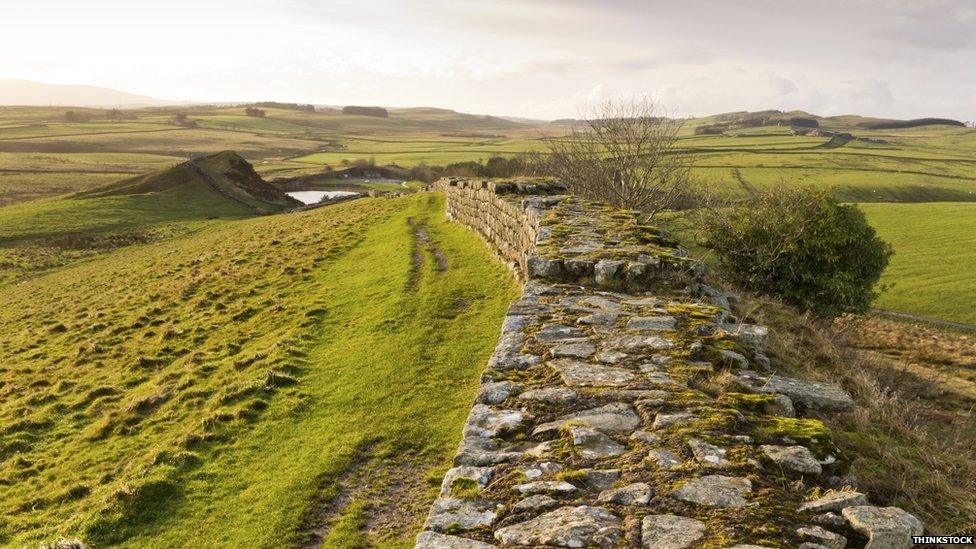
Heritage workers say it is 'devastating' when sites like Hadrian's Wall are targeted by nighthawking
Heritage groups say one of the countryside's most famous monuments is "under attack" from illegal metal detectorists hunting for buried treasure. But what is "nighthawking" - and is it robbing us of our past?
"See a penny, pick it up and all that day you'll have good luck" - it's something we've all told ourselves on those harmless occasions we've spotted small change on the ground.
But there are times when pocketing the odd silver or gold coin truly breaks the law.
Illegal metal detecting - or "nighthawking" as it is more commonly known - is sweeping the spine of the east of England, heritage groups say, robbing us of our chance to examine the past and causing damage and strife to landowners.
England's earliest settlements - areas such as Lincolnshire, Sussex, East Anglia and Kent - are some of those suffering the most at the hands of criminals churning up the land in the hope of finding valuable relics left by our ancestors.
Hadrian's Wall in the Northumberland National Park is one of the most recent places to come under attack, with unlawful excavations being carried out at Steel Rigg and Peel Crags.
Though it is only the second time it has been targeted in five years, the site is listed as a Scheduled Ancient Monument - an archaeologically and nationally important location where it is a criminal offence to use metal detecting equipment without permission from English Heritage.

Hadrian's Wall is a World Heritage site which attracts 500,000 visitors every year
Eric Wilton, National Trust countryside manager for the Hadrian's Wall Country Group - which looks after a six-mile stretch of the Roman structure - says: "We spend a lot of money preserving the site so it's devastating when [nighthawking] happens.
"There were two areas [targeted] and we don't know whether they found anything. But if they did take something, we have lost all that context and opportunity to understand the site better, which is frustrating."
Nighthawking isn't a new problem - it has been around since the 1970s - but the scale of the issue wasn't fully appreciated until 2009 when a national survey, external commissioned by English Heritage revealed 240 sites were affected by the activity between 1995 and 2008.
As a result, the public body drafted in Ch Insp Mark Harrison from Kent Police as its national policing and crime advisor and launched its heritage crime programme, which has tackled more than 130 cases of nighthawking since 2011.
"In five years, we have gone from almost doing nothing in terms of law enforcement to having a national policing lead and 16 specialist prosecutors," says Mr Harrison.
"What's difficult to assess is how successful we have been in deterring potential offenders, but I think we clearly have had an effect.
"In terms of repeated nighthawking at individual sites, we seem to have deterred people from doing that by sending out strong messages when we do take action, training police officers and working with landowners to make sure they call in any suspicious behaviour."

What is treasure?
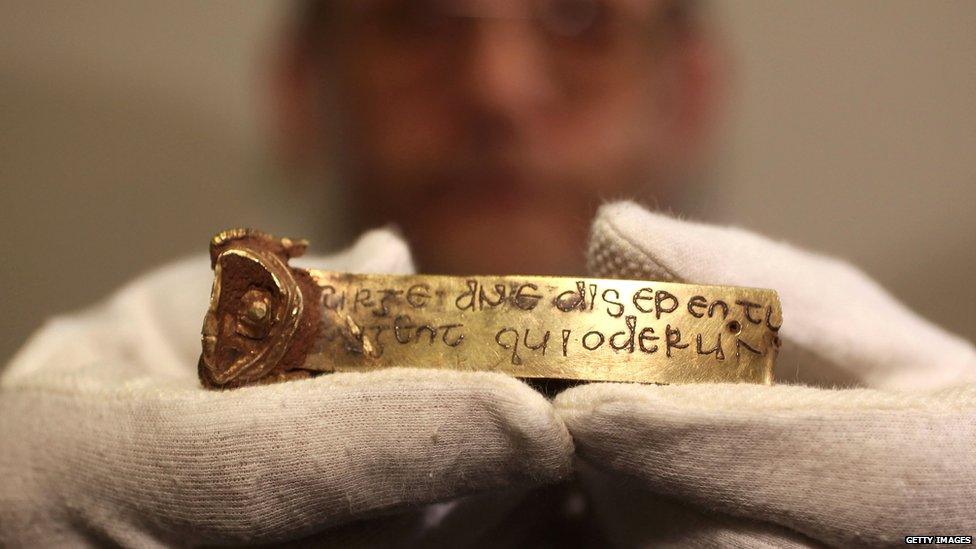
Treasure is any object which is at least 300 years old when found and:
is one of at least two coins in the same find and has a precious metal content of at least 10%
if the precious metal content is less than 10%, is one of at least ten coins in the same find
is not a coin but has a precious metal content of at least 10%
is any object of any material found in the same place as another object which is deemed treasure
is an object substantially made from gold or silver but is less than 300 years old

The term "nighthawking" first surfaced in the 1990s and describes the illegal search and removal of artefacts using metal detectors by people who don't have permission to be on the land.
The myth that these treasure hunters are one or two loners striking lucky by torchlight is wrong, argues Mr Harrison.
"Some of these people are very happy to travel long distances, sometimes in groups. They use camouflage kit and sophisticated equipment with night vision and very powerful torches.
"They're very well organised. This idea people have that they're just having a bit of fun and that they don't know what they're doing is something we need to dispel."
Nighthawkers are not to be confused with responsible hobbyists, who follow the code set by the National Council for Metal Detecting, external and report their finds to the relevant bodies.
But their passion for the pastime goes beyond observing legalities, says Gary Clifford, chairman of the Wyvern Historical and Detecting Society.
"Responsible detectorists do it for the thrill of finding something, rather than finding something of monetary value. Nighthawkers go on sites where they know they're going to find something [valuable]" he says.
"A few months ago we found a gold ring and it was a really nice find for our club. Then a week later the farmer had to throw off three guys who were pretending to be our members.
"We're all tarred by the same brush, it's terrible for us. There's so much nice land out there we can't go on because of trespassers messing it up for the rest of us."
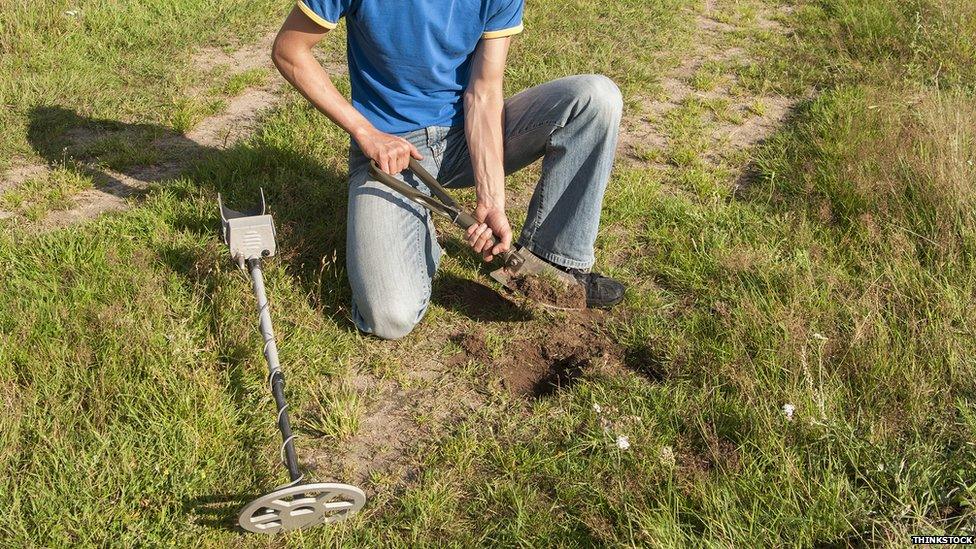
Responsible metal detectorists have permission to search the land and report their finds to the authorities
There are 20,000 scheduled monuments in England, making full time policing of these sites nigh on impossible. But it is through working with genuine detectorists that authorities can crack down on the tiny criminal minority, says Mr Harrison.
"Encouraging bona fide detectorists means they will most likely police the land for that farmer. When I train them I tell them they're our neighbourhood watch.
"They're out in rural areas and they see things and we give them the confidence to call [us].
"All of the nighthawks we have dealt with so far haven't been allied to any club or society, they've been stand alone detectorists and that's been heartening."
Worse than trespassing and the potential damage to these historically significant pieces of land is the theft of whatever they find, says Mike Heyworth, from the Council for British Archaeology.
"It's an incredible loss of knowledge because the purpose of archaeology is to preserve it. What's distressing is we're losing our history, because we've got no way of knowing what they have and understanding what it meant about the place.
"It's an illicit activity that often goes unrecorded. There's not many reports or prosecutions because of the problem of proving it. Unless you catch them in the act, how do you actually prove they were in the field and taking something?"
We're all tarred by the same brush. There's so much nice land out there we can't go on because of trespassers messing it up for the rest of us."
The issue of evidence is one that continues to rear its head but there have been a number of successful investigations and prosecutions against nighthawks.
In 2012, two men were given conditional discharges of 24 months and forfeited their metal detectors after admitting stealing Roman artefacts from a site in Baylham, Suffolk.
Later that year, in the first ruling of its kind in England, two metal detectorists were slapped with ASBOs for carrying out illegal activities on a protected site near Irchester, a result English Heritage called a "watershed" in battling nighthawks.
More recently, police caught two men scouring High Rocks at Tunbridge Wells with metal detectors. They were dealt with by written warning and voluntarily gave up their equipment.
But what happens to those who successfully evade the law?
Some simply sell what they can at the pub, says Mr Heyworth. But many turn to internet sites like eBay and Etsy.

Discovery and Reporting of Treasure
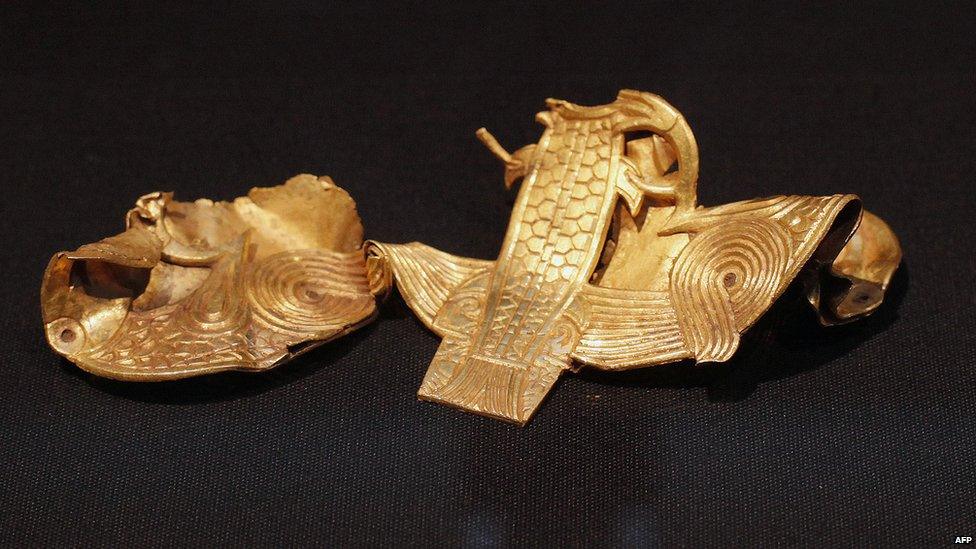
When someone discovers an artefact or coins that she or he believes meets the criteria for treasure they have 14 days within which they should notify the coroner in that district.
Most people who find potential treasure take the item to their local Finds Liaison Officer (FLO) who aid in the initial identification of the find and can also report the find to the coroner on behalf of the finder
The FLO will also report the find to the British Museum who will issue a treasure reference number
When the FLO reports the find to the coroner, the finder receives acknowledgement from the coroner's office

In 2014, the Portable Antiquities Scheme, which records articles of archaeological interest found by members of the public, questioned 41 eBay members about items they were selling.
But the success rate of selling items of real significance on the auction site is low, says PAS treasure registrar, Ian Richardson.
"When someone wants to make the most money out of something, they're going to say where it came from and how old it is and if you put those details, it identifies it as treasure," he says. "So it's rare that significant material can be sold on [in that way].
"We ask sellers whether it's been reported and a lot of people say, 'I wasn't the person who found it', which doesn't remove its status as treasure.
"But some people just have an ignorance of the law rather than them deliberately trying to break it. That's built into it the Treasure Act because it says you have to report it within 14 days of discovering it or realising it's treasure.
"So finders can say, 'I didn't know there was this law', or didn't know their object qualified. It's also about educating people. One person thought he didn't have to declare something because it was silver and not gold."
Small change, big numbers
1,078,600
archaeological finds have been recorded by the PAS since 1997
-
80,861 finds were recorded in 2013
-
90% of those were found by metal detectorists
-
993 finds were reported as treasure in 2013
-
41 eBay members were questioned by the PAS about items they were selling
Of course, there are those who follow the rules and report their finds - the most famous in recent memory being the discovery of the Staffordshire Hoard.
The largest ever haul of Anglo-Saxon treasure in Britain was found in a field near Hammerwich in 2009 by amateur metal detectorist, Terry Herbert.
He and the landowner split the money after the hoard - which contained 1,500 items made of gold and silver - was valued at more than £3m.
"Can you imagine finding the Staffordshire Hoard and illicitly trying to sell it?" asks Mr Harrison. "He did the right thing, he reported it and it was excavated and it was valued.
"It shows that if you follow the rules, then the system rewards you for your honesty. But more importantly its knowledge worth is re-writing our understanding of the development of England."
- Published11 February 2015
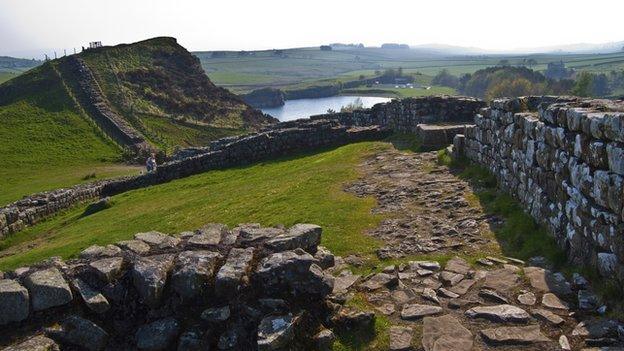
- Published11 December 2014
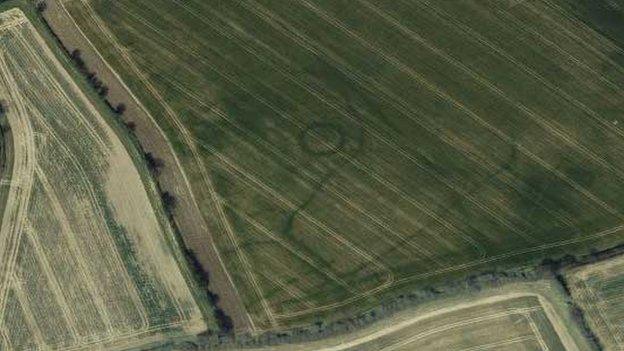
- Published16 May 2013
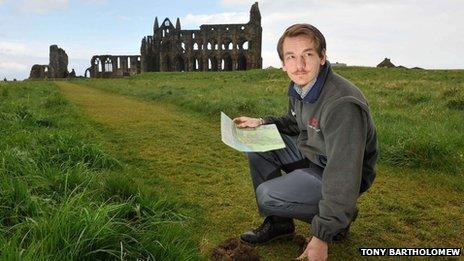
- Published30 April 2013
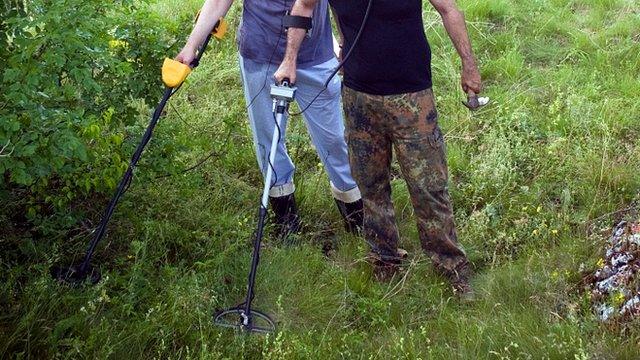
- Published3 July 2011